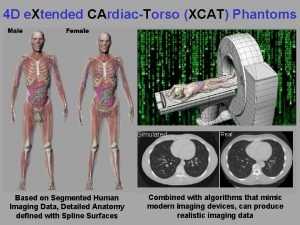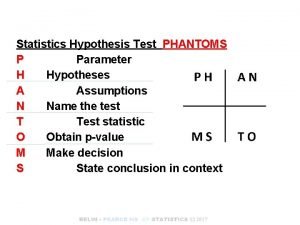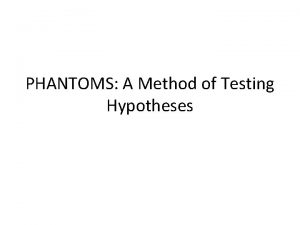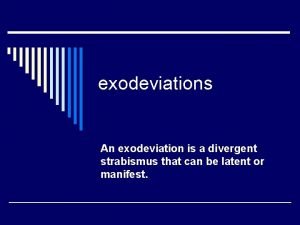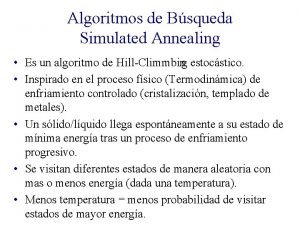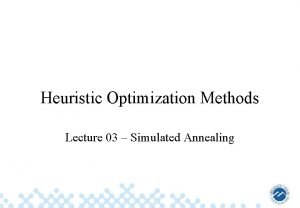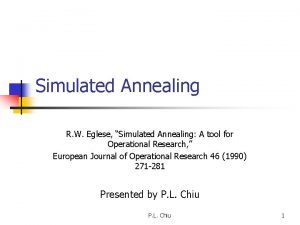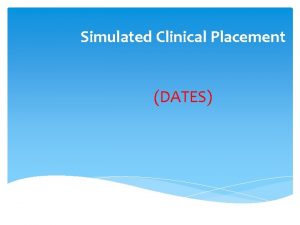4 D e Xtended CArdiacTorso XCAT Phantoms Simulated









- Slides: 9

4 D e. Xtended CArdiac-Torso (XCAT) Phantoms Simulated Based on Segmented Human Imaging Data, Detailed Anatomy defined with Spline Surfaces Real Combined with algorithms that mimic modern imaging devices, can produce realistic imaging data

Developing a population of XCAT phantoms • XCAT previously limited to a pair of adult models (male and female) • Modeling patient variability is essential to mimic clinical trials (what works for one person may not work for others) • Number of phantoms is limited due to time to segment patient data (takes months to a year/model)

Population of 4 D XCAT Phantoms • Currently creating a population of hundreds of detailed phantoms to represent the public at large from infancy to adulthood for use in imaging research • Each model is based on patient CT data • Include cardiac and respiratory motions for 4 D simulations • Library of 4 D phantoms

Phantom Construction • Segment patient CT data (bones and major organs) to create an initial model – Fit arms/legs to patient model using XCAT models scaled to patient size • Utilize MC-LDDMM mapping algorithm to morph one complete template XCAT phantom (including cardiac & respiratory motions) to the target model – Defines unsegmented structures (vessels, muscles, tendons, ligaments) – No need to segment all structures • Using this technique, a phantom can now be completed in days instead of months Template XCAT Patient Target XCAT Tward el al, Patient Specific Dosimetry Phantoms Using Multichannel LDDMM of the Whole Body, International Journal of Biomedical Imaging, vol. 2011, Article 481064

New XCAT Phantoms Segars el al, Population of anatomically variable 4 D XCAT adult phantoms for imaging research and optimization, Med Phys, 40, (2013). Norris el al, A set of 4 D Pediatric XCAT Reference Phantoms for Multimodality Research, Med Phys, 41, (2014). Segars el al, The development of a population of 4 D pediatric XCAT phantoms for imaging research and optimization, Med Phys, (2015).

New XCAT Phantoms Segars el al, Population of anatomically variable 4 D XCAT adult phantoms for imaging research and optimization, Med Phys, 40, (2013). Norris el al, A set of 4 D Pediatric XCAT Reference Phantoms for Multimodality Research, Med Phys, 41, (2014). Segars el al, The development of a population of 4 D pediatric XCAT phantoms for imaging research and optimization, Med Phys, (2015).

XCAT Population of Models

Application to Imaging Research Population of models to simulate imaging data from varying body types under different protocols

Accurate Dose Estimation from Imaging Protocols Chest Scan Abdomen Scan Li et. al. , Med Phys, 38(1), 397 -407 (2011). Li et. al. , Med Phys, 38(1), 408 -419 (2011).
